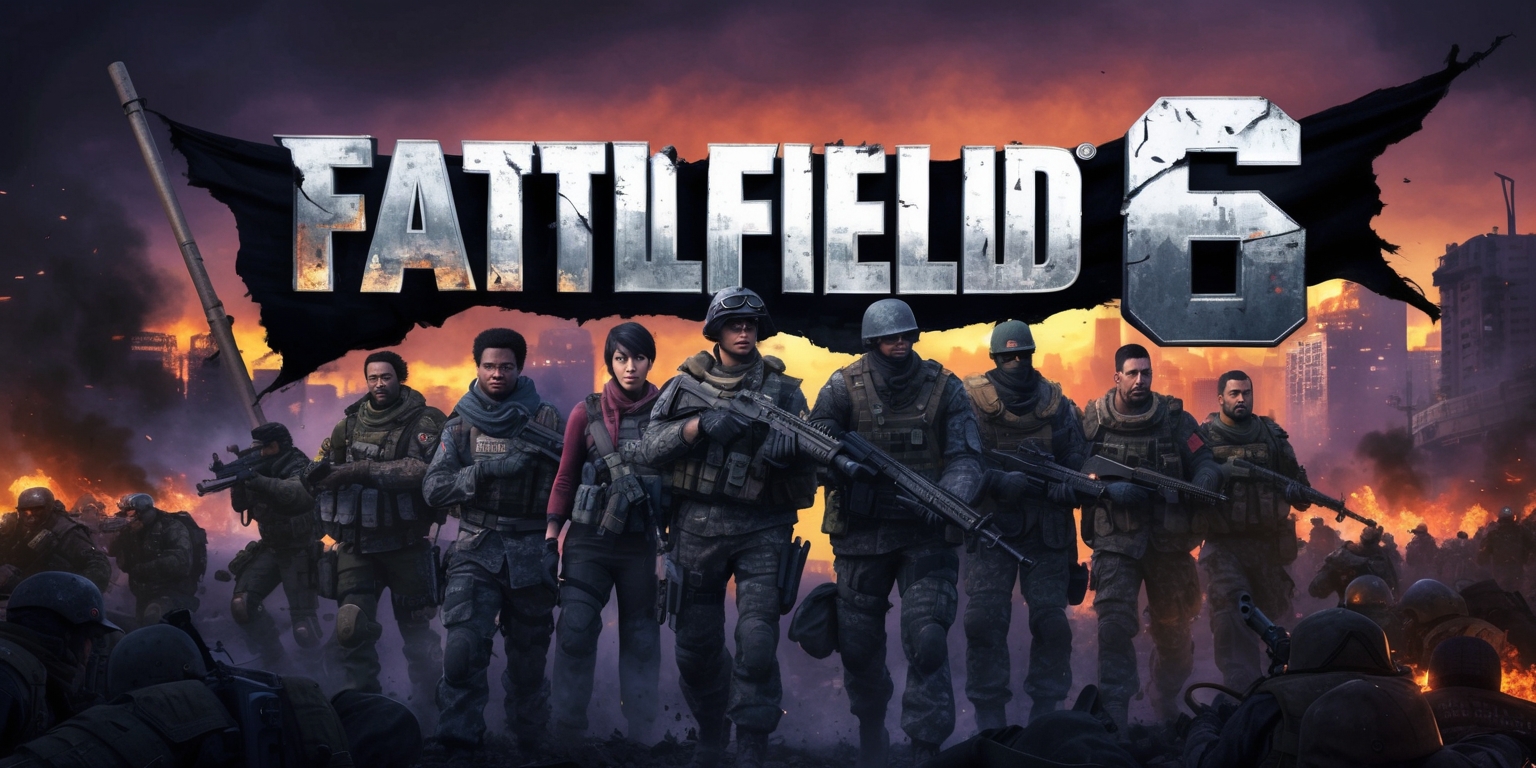Battlefield 6 Open Beta: Unveiling Technical Hurdles and Community Solutions
2025-08-14

The open beta experience of Battlefield 6 has It ignited a wealth of conversations within its community, as players dive into early access and encounter a blend of remarkable gameplay excitement along with head-scratching technical quirks. As the studio acknowledges that the beta stage is inherently rough around the edges, many players have detailed a series of known issues that range from animation glitches to control nuances. This evolving environment offers enthusiasts both a taste of future potential and the reality of unfinished features. In this unfolding phase, the game presents a platform that is as much about community feedback as it is about showcasing next-generation combat experiences.
Explorations of Early Access Dynamics
Within the initial hours of community engagement, Battlefield 6’s open beta has provided a dynamic glimpse into gameplay innovation and technical challenges. Early access has allowed players to test environments with realistic combat mechanics and raw battle encounters, albeit with a few obstacles. Veterans are noting that issues like unresponsive in-game commands and graphical inconsistencies serve as reminders of the beta’s developmental nature. While the studio prioritizes community input, players have encountered problems such as malfunctioning enemy pings and glitches with critical actions such as deploying weapons and using stationary firepower. This period of testing is vital for identifying necessary refinements and fine-tuning the overall experience, highlighting that even the most promising game experiences must evolve through iterative player interactions.
Nuances in Gameplay Functionality
The beta phase reveals a mix of engaging combat zones and subtle flaws that influence gameplay mechanics. Players have discovered that using stationary weapons can interfere with enemy marking, effectively disrupting tactical communication in the midst of battle. In addition, certain character animations—particularly those involved with traversing zipline passages—don’t perform as expected. These interruptions in seamless gameplay have sparked conversations about in-game polish and technical refinement. While developers have been proactive in discussing these known issues, the experience has also shed light on the complex balancing act between innovative combat design and reliable multi-functionality. Adopting such measures during early access ensures that flaws are addressed without detracting from the overall immersive experience of modern warfare.
Character Movement and Attachment Challenges
One of the more noticeable areas of contention during the beta lies within character movement and interaction features. Players have reported difficulties with the animation sequences when distinct actions—such as attaching to ziplines—are executed. The irregularities in these animations can sometimes interrupt the fluidity of gameplay. Additionally, the act of reviving teammates occasionally has unforeseen consequences, with characters inadvertently descending into the level geometry. These unsettled interactions highlight that the immersive mechanics of battlefield operations are as reliant on robust animation systems as they are on combat design. With such issues in sight, players are anticipating further patches to refine these smooth transitions between complex tactical actions, ensuring that each move reflects the game’s intended immersive realism and precision.
Interface and Control Innovations Under Strain

The modern battlefield experience in Battlefield 6 is inextricably tied to user interface and control elements, "with several still actively undergoing development". Players have highlighted certain shortcomings in the game’s UI, such as the unresponsive “Close Map” command and the intermittent failure of gadget pick-up prompts. Moreover, key rebindings remain glitchy, as alternate key settings for actions like crouching do not function as configured. These interface challenges affect how fluidly players can interact during intense combat scenarios, creating additional barriers in the heat of action. Despite the innovation behind the user interface design, ensuring responsive control schemes and intuitively designed prompts remains an essential focus area for the developers who are keen to refine indie-specific details through active beta feedback.
Visual and Aesthetic Hurdles in Map Design
Visual fidelity and carefully crafted aesthetics are at the heart of Battlefield 6's design philosophy, yet the beta environment exposes several areas requiring further refinement. On maps such as the designated firing range and the Capstone layout, players have observed irregular visual effects including distorted textures and absent environmental details. Certain aesthetic issues, such as the missing textures on zipline ropes or the lack of proper water effects, contribute to a less immersive experience. Meanwhile, lighting discrepancies on specific battlegrounds result in darker, unintended pockets that may hinder strategic visibility and gameplay. This juxtaposition of innovative design ambitions with platform-specific technical challenges underscores the importance of ongoing graphical optimization during the open beta phase, ensuring that the final experience lives up to its artistic potential.
Technical Intricacies of Weapon Handling
At the core of the battlefield simulation lies the handling and customization of diverse weapons, a field where the beta has shown both promise and pitfalls. Players have noted issues with weapon recoil that affect the steadiness of aim and overall combat effectiveness. Although developers have implemented balance passes for recoil management in the full game, these adjustments did not make it into the open beta. Furthermore, some weapon attachments suffer from descriptive placeholders, and certain customized scopes lead to unintended visual clipping during critical firing modes. These technical intricacies in weapon dynamics compel developers to further refine the balance between authentic combat interactions and realistic ballistic responses. Each iteration in weapon handling feedback is vital for paving a finer path toward seamless, immersive confrontation scenarios.
Complexities in Multiplayer and Communication Mechanics
Battlefield 6’s open beta shines a spotlight on the challenges of sustaining smooth multiplayer connectivity and ensuring effective in-game communication. The tactical use of pings is hindered by specific issues such as a lack of response when players employ stationary weaponry. This shortfall affects team coordination, especially in scenarios involving strategic enemy spotting and rapid response maneuvers. Furthermore, players occupying vehicles experience unique complications, for instance, a switch in perspective during redeployment and inability to ping or spot targets. These complications in the multiplayer arena influence the extent to which teams seamlessly collaborate and adjust to evolving battlefield conditions. Therefore, the emphasis on refining communication endpoints and networked operations remains paramount as developers diligently work on implementing solutions before the game’s full launch.
Interface Feedback and Audio-Visual Plugin Adjustments
In addition to visual challenges, the open beta has brought attention to some issues related to audio-visual responsiveness and plugin adjustments. The soldier supply animations, an element intended to enhance the immersive feel of resupply interactions, remain incomplete. Moreover, some slider elements within the settings menu have not yet reached the level of polish expected in a finished product. The absence of clear icons for specific in-game notifications, such as spotted vehicles or objective markers, further contributes to interface ambiguity. These subtle yet critical adjustments underscore the need for fine-tuning both aesthetic and functional parameters. As developers gather community insights, these audio-visual tweaks are continuously prioritized to harmonize the interactive aspects of the game with its robust, high-tech combat framework.
Graphical Fidelity and Environmental Details
Environmental presentation continues to inspire debate among those who have sampled the Battlefield 6 open beta. The design team’s ambition to craft detailed, interactive landscapes has met with mixed results as players report encountering missing or improperly rendered features. For example, key map details, such as the intended air vehicle boundary indicators, are absent from the Capstone overview. Similarly, the visual presentation of barbed wire and intricate decorative elements on various terrains fails to evoke the realistic sense of danger the game aims to create. Despite this, early adopters appreciate the experimental nature of these elements, understanding that even the finest details demand rigorous testing and refinement. As these graphical fidelity challenges are addressed, the game moves ever closer to delivering a fully immersive digital warzone experience.
Pragmatic Adjustments and Workaround Strategies
To ease the transition into the beta phase, Battlefield Studios has proactively provided players with workaround strategies addressing several pivotal issues. Detailed lists of known bugs have been disseminated, covering a wide range of challenges from UI inconsistencies to hardware-specific complications. For example, issues involving language settings on PlayStation 5 have been mitigated through clear instructions such as reinstalling the beta and switching default language settings. Additional advisories include recommendations for managing system-level configurations like Secure Boot settings and randomization measures in Windows Security. These practical suggestions not only simplify troubleshooting but also empower players to actively participate in the game’s iterative refinement process. Such workarounds demonstrate a commitment by the developers to offer support and transparency during this critical phase of product evolution.
Technical Remedies and Crash Fix Strategies
Among the technical complexities facing Battlefield 6 players, system crashes dominate a portion of the debugging conversation. Reports of crashes at splash screen moments—often with references to issues like “D3D12CreateDevice” failures—present significant interruptions to gameplay. In response, the studio has recommended several remedial actions, including the repair of game files using built-in functionalities and adjustments in operating system security settings such as disabling Force Randomization for Images. These prescribed fixes require users to navigate through settings in Windows Security and associated system configurations before relaunching the game. While these strategies may appear technical, they underscore the developers' dedication to paving a smoother path for the final release by educating the community on operating system interactions. In essence, the careful dissection of these technical hurdles reflects the iterative process of refining a cutting-edge interactive experience.








